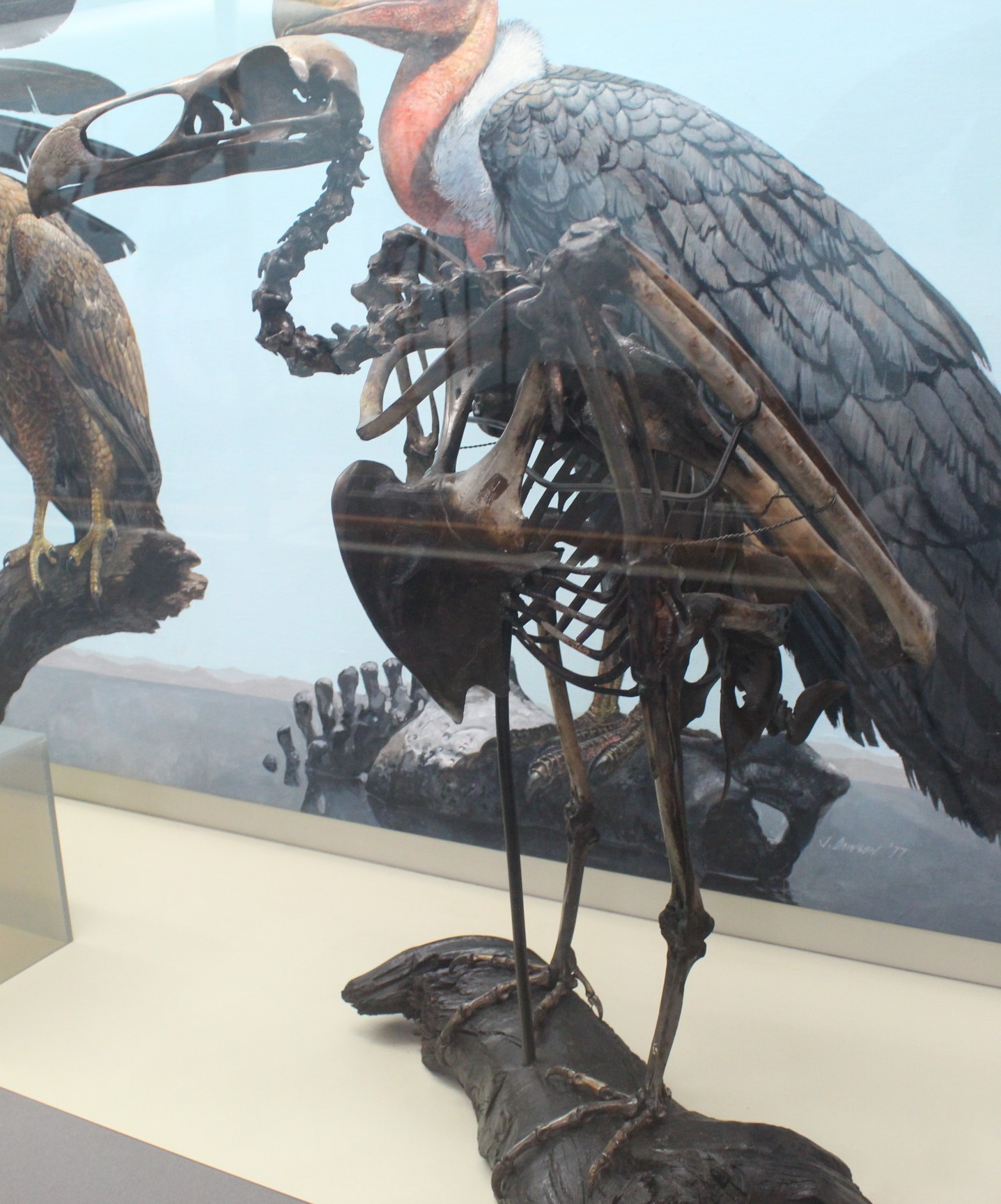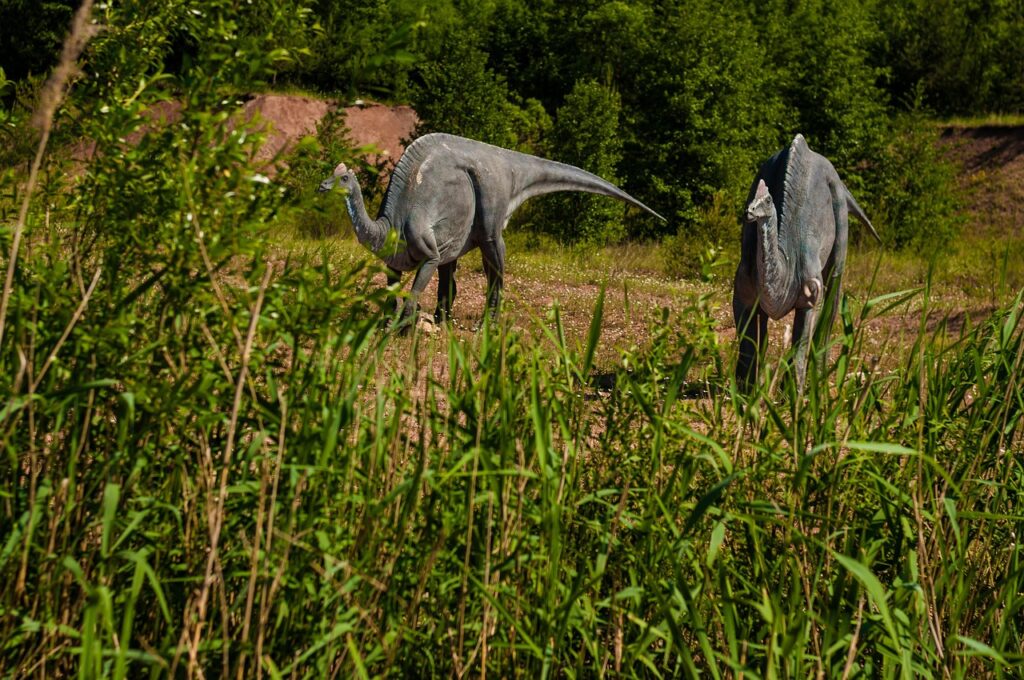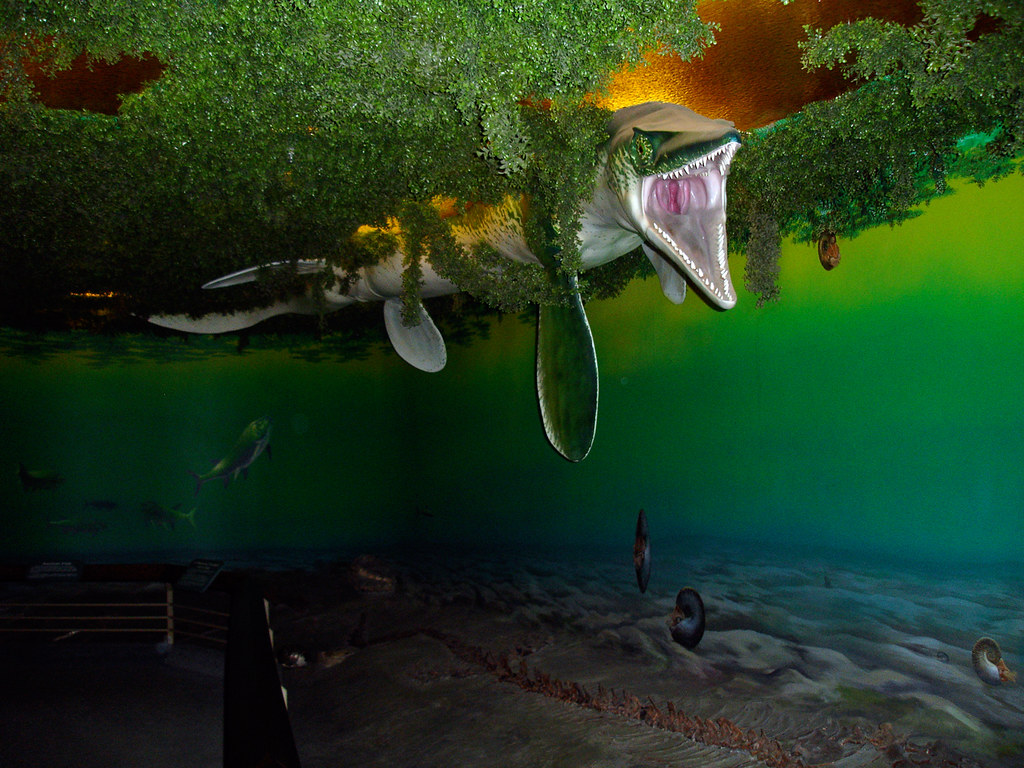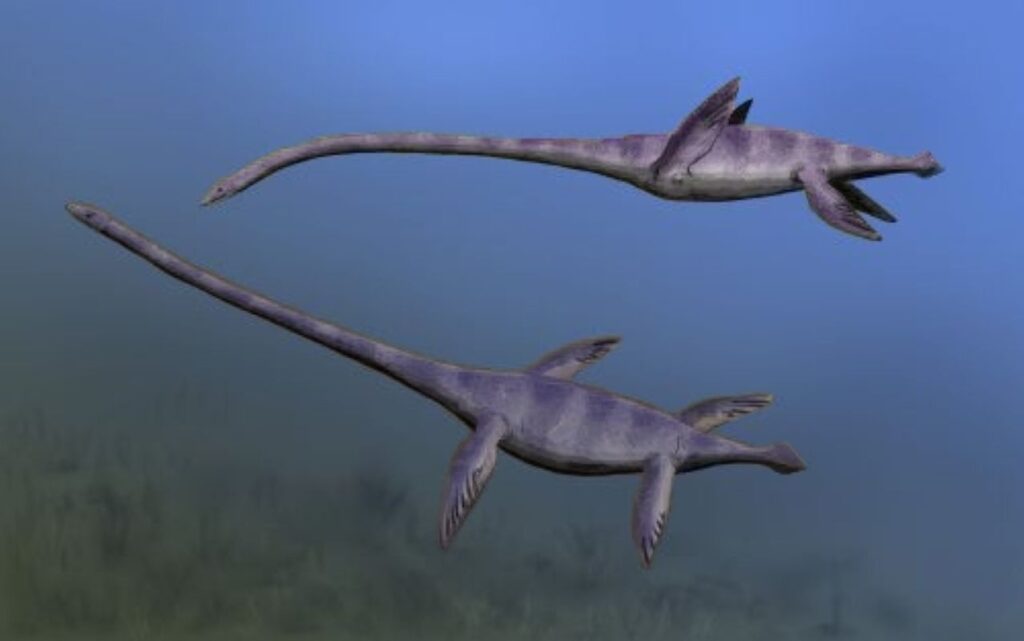Picture this: you’re standing in an ancient landscape 25 million years ago, looking up at the sky, when suddenly the sun disappears. But it’s not a cloud blocking the light – it’s a bird with wings spanning nearly 25 feet, soaring overhead like a living aircraft. These weren’t mythical creatures from fantasy novels; they were real birds that once ruled the skies of our planet. The fossil record reveals that some ancient birds achieved wingspans that would make modern commercial aircraft seem modest by comparison, transforming our understanding of what was possible in the natural world.
The Argentavis Magnificens: Nature’s Ultimate Flying Machine
Deep in the badlands of Argentina, paleontologists uncovered the remains of what might be the most spectacular bird that ever lived. Argentavis magnificens lived approximately 6 million years ago and boasted a wingspan that stretched an incredible 23 feet from tip to tip. To put this in perspective, that’s wider than many small aircraft and nearly twice the wingspan of the largest living bird today.
This colossal condor relative weighed around 150 pounds, making it heavier than most adult humans. Scientists believe Argentavis rarely flapped its massive wings, instead relying on thermal currents and slope soaring to stay aloft for hours at a time. The bird’s flight style resembled that of modern gliders, using air currents with remarkable efficiency to cover vast distances across the South American landscape.
Pelagornis Sandersi: The Ocean Giant
While Argentavis ruled the land, another prehistoric giant dominated the ancient seas. Pelagornis sandersi lived about 25 million years ago and possessed what scientists consider the largest wingspan of any bird in Earth’s history. With wings stretching an estimated 20 to 24 feet, this seabird made today’s albatrosses look like sparrows.
Unlike modern birds, Pelagornis had rows of sharp, tooth-like projections along its beak, perfect for snatching fish and squid from the ocean surface. These pseudo-teeth gave the bird a fearsome appearance that would have struck terror into any prehistoric marine creature. The giant seabird likely spent most of its life gliding over ancient oceans, using dynamic soaring techniques to travel thousands of miles with minimal energy expenditure.
Teratornis: The American Thunder Bird

North America had its own prehistoric flying giants in the form of Teratornis species. These massive birds of prey lived during the Pleistocene epoch, sharing the landscape with saber-toothed cats and woolly mammoths. Teratornis merriami, the most well-known species, had a wingspan reaching 12 feet and weighed up to 33 pounds.
What made Teratornis particularly fascinating was its lifestyle as both a scavenger and active predator. Fossil evidence suggests these birds could tackle prey as large as small deer, using their powerful talons and massive beaks to subdue victims. Their bones have been found in abundance at the La Brea Tar Pits in Los Angeles, indicating they were common residents of prehistoric California.
The Physics of Giant Flight

How did these massive birds actually manage to get airborne and stay there? The answer lies in sophisticated adaptations that pushed the boundaries of what’s physically possible for flying creatures. These ancient giants had hollow bones that were proportionally larger than those of smaller birds, creating the perfect balance between strength and weight reduction.
Their wing loading – the ratio of body weight to wing area – was remarkably low, allowing them to generate sufficient lift even with their enormous mass. Modern calculations suggest that birds like Argentavis operated at the very edge of what’s aerodynamically feasible for powered flight. This means they likely relied heavily on environmental conditions, taking off only when thermal currents and wind patterns were optimal.
Evolutionary Advantages of Enormous Size
Being gigantic in the ancient world came with significant survival benefits that justified the evolutionary investment in such massive frames. Large size provided protection from most predators, as few creatures could threaten a bird the size of a small airplane. These giants could also access food sources unavailable to smaller competitors, including large carcasses and prey animals.
Energy efficiency played a crucial role in their success. Once airborne, large birds can soar for extended periods without flapping, covering enormous territories in search of food with minimal energy expenditure. This advantage became particularly important during periods when food was scarce or widely distributed across the landscape.
Ancient Ecosystems and Giant Birds

The world that supported these flying giants was vastly different from today’s Earth. During the Miocene epoch, when many of these species thrived, global temperatures were warmer and atmospheric conditions were more favorable for large-scale soaring flight. Vast grasslands and open landscapes provided the perfect hunting grounds for these aerial predators.
These ecosystems supported megafauna that could sustain large scavenging birds. Massive ground sloths, early elephants, and other large mammals provided abundant carrion opportunities. The absence of human hunting pressure also meant that these slow-reproducing giants could maintain stable populations across millennia.
Extinction Patterns and Climate Change
The disappearance of giant flying birds wasn’t sudden but followed patterns that scientists are still working to understand completely. Climate cooling during the Pliocene and Pleistocene epochs reduced the thermal currents that these birds depended on for effortless flight. As global temperatures dropped, the atmospheric conditions that made giant bird flight possible gradually disappeared.
Competition with emerging mammalian carnivores also played a role in their decline. As terrestrial predators became more efficient, giant birds lost their monopoly on large carcasses. The rise of human populations in the Americas dealt the final blow to species like Teratornis, which couldn’t adapt quickly enough to rapidly changing environmental pressures.
Fossil Discovery Challenges
Finding complete fossils of these prehistoric giants presents unique challenges that make each discovery incredibly valuable. The hollow bones that made flight possible also made preservation much less likely, as they were more fragile and prone to breaking down over geological time. Most specimens exist as fragmentary remains, requiring scientists to make educated estimates about complete body size and wingspan.
Weather conditions and geological processes further complicate preservation. Many giant bird fossils are found in very specific depositional environments, such as tar pits or lake beds, where rapid burial could preserve delicate bone structures. This selective preservation means our understanding of giant bird diversity is likely incomplete, with many species probably lost to time without leaving any trace.
Modern Comparisons and Scale
To truly appreciate the magnitude of these ancient giants, comparing them to modern aircraft provides startling perspective. The wingspan of Argentavis magnificens matches that of a Cessna 172, one of the most common small aircraft in the world. Pelagornis sandersi’s wings were wider than those of many ultralight aircraft, yet this was a living, breathing creature that could maneuver with biological precision.
Today’s largest flying bird, the wandering albatross, has a maximum wingspan of about 11 feet – impressive by modern standards but dwarfed by its prehistoric relatives. Even large aircraft pale in comparison when considering the biological engineering required to achieve such dimensions while maintaining the ability to fly, hunt, and reproduce successfully.
Behavioral Reconstructions
Scientists use various methods to reconstruct how these giants lived and behaved, combining fossil evidence with observations of modern large birds. Computer modeling suggests that Argentavis likely spent hours each day simply soaring, using its keen eyesight to scan vast territories for food opportunities. Their daily routine probably involved taking advantage of morning thermal currents to gain altitude, then gliding efficiently across their range.
Breeding behavior would have been spectacular to witness. These birds likely had extended courtship displays, possibly involving aerial acrobatics that demonstrated their flying prowess to potential mates. Nesting sites were probably located on high cliffs or elevated areas that provided easy takeoff access, similar to modern large raptors but on a much grander scale.
Biomechanical Marvels
The internal structure of these giant birds represented evolutionary engineering at its finest. Their breast muscles, responsible for wing movement, were proportionally massive yet efficiently designed to minimize energy expenditure during flight. The birds’ cardiovascular systems had to support the enormous oxygen demands of powering such large wings while maintaining circulation throughout their massive bodies.
Their respiratory systems were particularly remarkable, featuring the advanced air sac system found in modern birds but scaled up to handle the demands of giant bodies. This allowed for the efficient oxygen extraction necessary to fuel flight muscles during takeoff and active flying. The integration of all these systems represents millions of years of evolutionary refinement.
Paleontological Detective Work

Every giant bird fossil tells a story that scientists must carefully piece together using multiple lines of evidence. Bone chemistry analysis reveals diet information, while wear patterns on beaks and talons provide clues about feeding behavior. Microscopic examination of bone structure can indicate age at death and overall health status of individual specimens.
Scientists also study the geological context surrounding fossil discoveries to understand the ancient environments these birds inhabited. Pollen samples, other animal fossils, and sediment analysis paint a picture of the ecological communities that supported these flying giants. This detective work helps researchers understand not just the birds themselves, but the entire ecosystems they were part of.
Cultural Impact and Human Fascination
Giant prehistoric birds have captured human imagination in ways that few other extinct creatures can match. Native American cultures across the Americas have legends of thunderbirds – massive flying creatures that controlled storms and weather. While these stories were passed down through oral tradition, some researchers suggest they might contain cultural memories of encounters with the last surviving giant birds.
Modern popular culture continues to be fascinated by these creatures, featuring them in documentaries, books, and films about prehistoric life. Their combination of familiar bird characteristics with impossible-seeming size creates a sense of wonder that resonates with people of all ages. They represent a time when Earth’s skies were filled with creatures that challenge our understanding of what’s possible in nature.
Future Research Directions
Advances in technology are opening new avenues for understanding these prehistoric giants. CT scanning of fossils reveals internal bone structure without damaging precious specimens, while computer modeling helps scientists test flight theories and behavioral hypotheses. DNA analysis techniques, though challenging with such ancient specimens, may eventually provide insights into evolutionary relationships and genetic adaptations.
Climate modeling is helping researchers understand the atmospheric conditions that made giant bird flight possible. By recreating ancient weather patterns and thermal current distributions, scientists can better understand how these birds navigated their world and why they ultimately disappeared. Future fossil discoveries, particularly in unexplored regions of South America and Asia, may reveal even larger species or provide more complete skeletal material.
These ancient aerial giants remind us that Earth’s history is filled with creatures that pushed the boundaries of what we thought possible. They soared through skies we can barely imagine, in ecosystems that no longer exist, representing evolutionary experiments in flight that will never be repeated. Their legacy lives on in every bird that takes to the air today, carrying genetic echoes of a time when the sky truly belonged to giants. What other impossible creatures might have once called our planet home?




